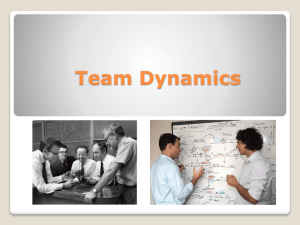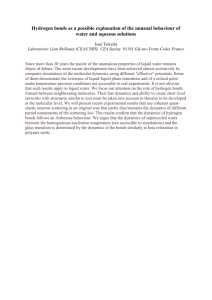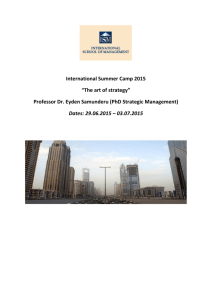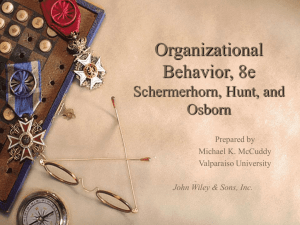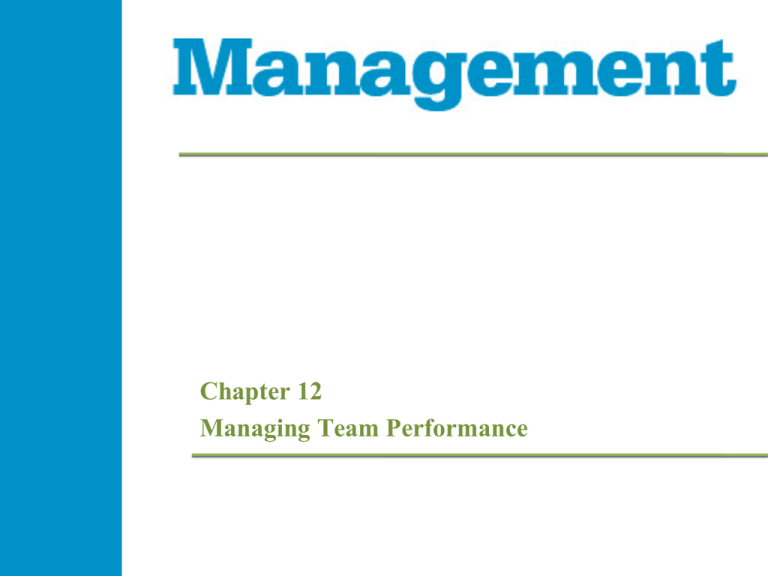
Chapter 12
Managing Team Performance
Learning Objectives
Describe why managers form working groups
to achieve results
Explain the characteristics of teams
Explain team dynamics and its relationship to
performance
Compare and contrast productive and
unhealthy conflict as it relates to
organizational results
Develop a strategic plan to increase team
performance
Management 1e
12-- 2
How Teams Make a Difference (p. 302)
Team
• Purposeful group formed to accomplish a project,
task, or goal
• Help solve cross-disciplinary problems, traverse
cultural boundaries, and drive initiatives
• Social loafing – members of a team contribute less
effort than they would if they were individually
responsible
• Teams can work as long as there is a reason for
them to exist in the first place
Management 1e
12- 3
How Teams Make a Difference (cont.)
Power of teams (p. 303)
• If managed the right way, teams can be effective in
attaining goals
• Formal team – working group formed by an
organization’s management to achieve specific,
agreed-upon strategies, plans, and outcomes
• Informal team – working group, generally not
intended to be permanent, formed by team
members to accomplish self-defined tasks and
objectives
May operate outside the constraints of the working
environment
Management 1e
12- 4
Team Characteristics (p. 304)
Different types of teams
• Functional team – formal, longstanding working
group organized around specific tasks, processes,
or roles
Also known as vertical or command teams
• Cross-functional team – formal, longstanding
working group with representation from diverse
divisions, departments, and levels of authority
Members represent a wide set of skills, roles, and
perspectives
Management 1e
12- 5
Team Characteristics (cont.)
Figure 12.1
Management 1e
12- 6
Team Characteristics (cont.)
Different types of teams (cont.)
• Management team – functional or cross-functional working
group of managers formed to plan, organize, lead, and control
organizational performance (p. 305)
• Self-directed team – operates without hierarchical
management supervision
Defined by specific outcomes and timetables
• Problem-solving team – working group formed to minimize
the negative impacts of a specific organizational challenge (p.
306)
• Task-based team – working group established to accomplish a
specific objective, with a tightly defined time frame for
completion
Management 1e
12- 7
Team Characteristics (cont.)
Quality circle (p. 306)
• Working group comprised of management and
staff with the purpose of minimizing performance
errors and variance
Virtual teams
• Working group that conducts the majority of its
collaborations via electronic communications
Management 1e
12- 8
Team Characteristics (cont.)
Size and roles (p. 307)
• Small teams tend to be more cohesive
• Larger teams more likely to instill social loafing
• Role – behavioral and performance expectation that is
consciously or unconsciously defined by a group
• Role structure – prescribed set of behavioral and
performance expectations for a position or job
• Role ambiguity – confusion that arises from an employee not
understanding the expectations, intentions, or purposes of
her/his position
• Overload – behavioral and system strains that occur when
expectations for positions or working groups exceed their
capacity to perform
Management 1e
12- 9
Team Characteristics (cont.)
Management 1e
12- 10
Team Dynamics (p. 308)
Largely unseen forces that can influence the
way a team operates and performs
Conformity
• An individual or group adheres to organizational
policies, procedures, cultural dynamics, and
performance standards
Generalization
• An individual or group perspective that is formed
through limited data or experience
Management 1e
12- 11
Team Dynamics (cont.)
Stages of group development (p. 308)
• Four-stage process by which teams become more
effective and efficient over time
• Forming – team members meet each other for the
first time and get a feel for the type of team that they
have joined
Norms – expectations implicitly or explicitly defined by a
group that result in a consistent set of behaviors or beliefs
• Storming – a measure of conflict may arise (p. 309)
Conflict – resistance or hostility arising from two or more
parties focusing on and attempting to reconcile differing
opinions
Management 1e
12- 12
Team Dynamics (cont.)
Stages of group development (cont.)
• Norming – team members settle into their new
roles and, by mutual agreement, decide how to
achieve their goals and objectives (p. 309)
Cohesiveness – degree to which individuals in a
working group exhibit loyalty and norm consistencies
Socialization – processes by which individuals attain
the knowledge, skills, cultural distinctions, and values to
adapt to a group’s norms
Management 1e
12- 13
Team Dynamics (cont.)
Stages of group development (cont.)
• Performing – team working at optimal level,
loyalty is high, and each member is invested in
achieving the goal (p. 309)
affiliation – person’s perceived connection to a group,
based on purpose, demographics, function, and other
intangible dimensions
• Team development can revert to earlier stages due
to negative factors
Management 1e
12- 14
Managing Conflict (p. 311)
Variation
• System-level changes that inevitably occur that may require
individuals and groups to respond
Unhealthy conflict (p. 312)
• Certain changes (e.g., high turnover, new group members)
can affect group dynamics and serve as a catalyst for
unhealthy conflict
Encouraging healthy conflict
• Negotiation- process by which two or more parties with
differing objectives, desires, or perspectives go through to
find a mutually agreeable solution
Management 1e
12- 15
Managing Conflict (cont.)
Key dimensions of ‘good conflict’ (p. 313)
• Emotion is left out of the equation
• Get ‘buy in’ from each member of the group on
the vision they propose to encourage productive
debate
• Debate should be focused on the future rather than
the past
However, learn how past conflicts have been resolved
Management 1e
12- 16
Strategies to Increase Performance
(p. 315)
Effective meeting flow options
Figure 12.2
Management 1e
12- 17
Strategies to Increase Performance
(cont.)
Effective meetings (p. 316)
Management 1e
12- 18
Strategies to Increase Performance
(cont.)
Performance development (p. 316)
Management 1e
12- 19
Strategies to Increase Performance
(cont.)
Recognizing excellence (p. 316)
Management 1e
12- 20
Copyright
Copyright © 2014 John Wiley & Sons, Inc.
All rights reserved. Reproduction or translation of this work
beyond that permitted in Section 117 of the 1976 United States
Copyright Act without express permission of the copyright owner
is unlawful. Request for further information should be addressed
to the Permissions Department, John Wiley & Sons, Inc. The
purchaser may make back-up copies for his/her own use only and
not for distribution or resale. The Publisher assumes no
responsibility for errors, omissions, or damages, caused by the
use of these programs or from the use of the information herein.
Management 1e
12-- 21


